Highlights and access methods of Kasuga Taisha Shrine (Nara Prefecture)
English | Japanese
Kasuga Taisha is a shrine located in Nara City, Nara Prefecture, and is the head shrine of approximately 1,000 Kasuga Shrines nationwide. It was founded in 768 AD during the Nara period, by the Fujiwara clan, by the imperial command of Empress Sh?toku, to pray for the protection of the Heijo-kyo capital and the prosperity of its citizens. Around 3,000 lanterns, donated since the Heian period, can be seen along the shrine's approach and around the main hall's corridors. Kasuga Taisha is registered as a UNESCO World Heritage Site and is part of the Historic Monuments of Ancient Nara.
In this article, we will explain the attractions of Kasuga Taisha Shrine in Nara Prefecture and how to access it for those who are traveling to Japan from overseas.
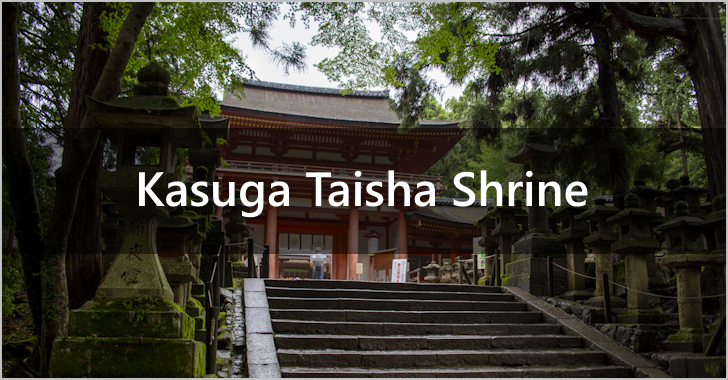
(Last modified: )
(Prefecture : Nara , Category : Shrines)
Table of contents
Highlights of Kasuga Taisha Shrine
We will introduce the highlights of Kasuga Taisha Shrine.
Stone Lantern on the Approach
Kasuga Taisha has approximately 3,000 lanterns that have been donated by many people since the Heian period. There are about 2,000 stone lanterns and approximately 1,000 hanging lanterns. These stone lanterns line the approach to Kasuga Taisha. The size of the stone lanterns and the designs of their fire chambers vary.
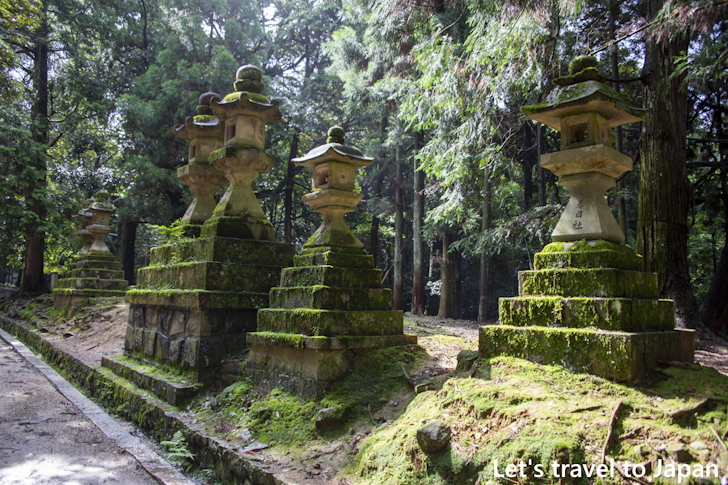
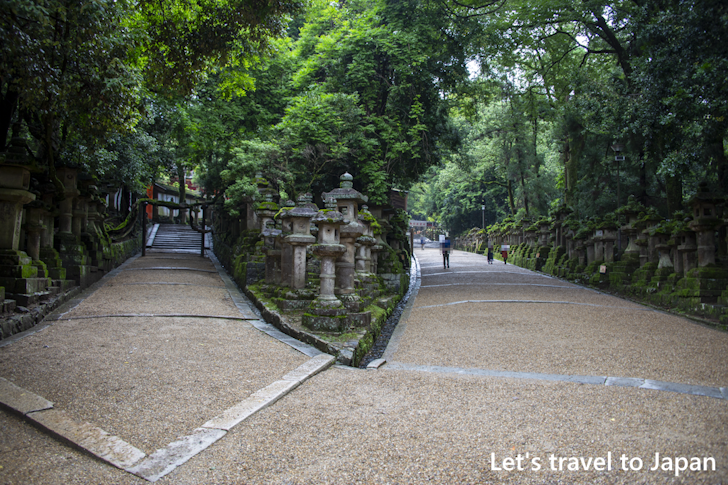
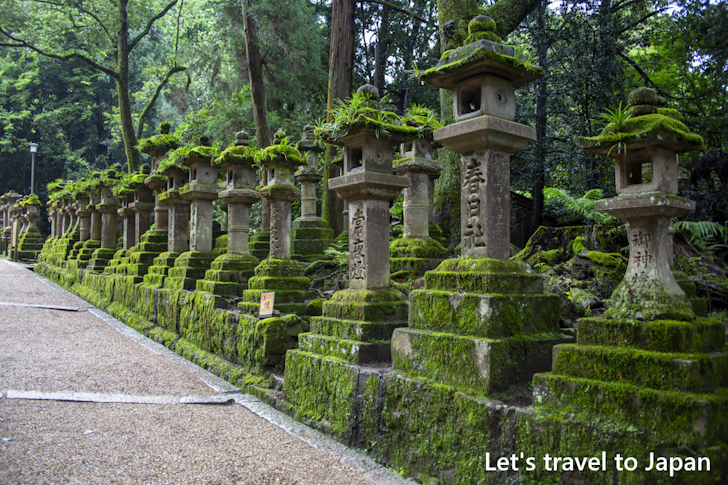
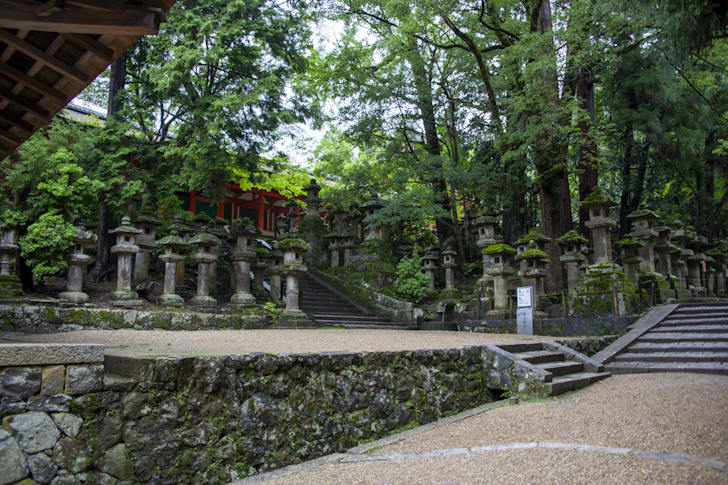
The path between the main shrine and the Wakamiya shrine is called the "Oaimichi." Along this path, you can find lanterns known as "Oaigata Toro," which are characterized by their cubic fire chambers made of cypress wood.
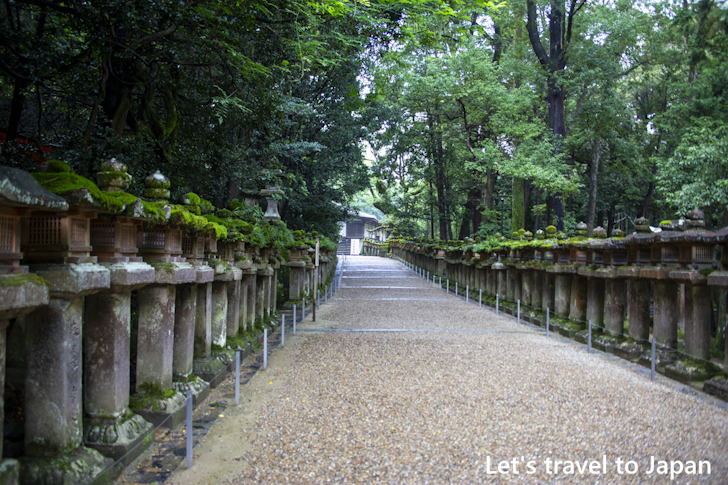
Additionally, among the stone lanterns, only 15 have "Kasuga Daimyojin" inscribed on them. It's said that if one can find five of these, their fortune in wealth will increase.
Fuseshika Temizusho
Upon entering the second torii gate, you will find the Fuseshika Temizusho (Fuseshika water purification area). At Kasuga Taisha, deer are revered as messengers of the gods, and the temizusho is shaped like a deer holding a scroll in its mouth. In the past, water used to flow from the tip of the scroll. Before paying your respects at Kasuga Taisha, please cleanse your hands and mouth here.
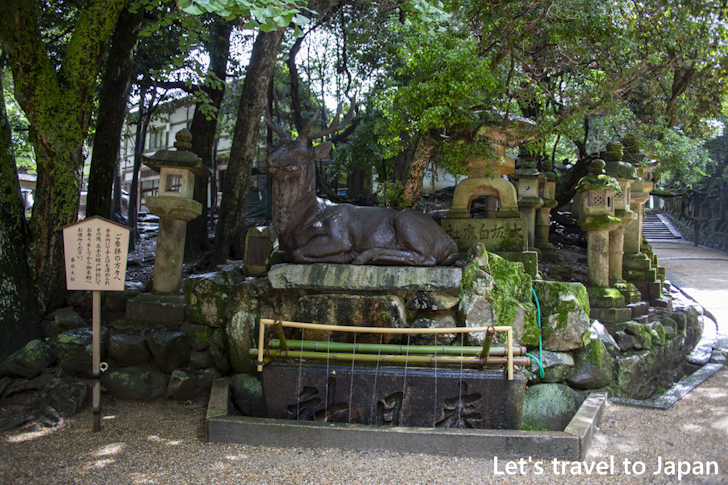
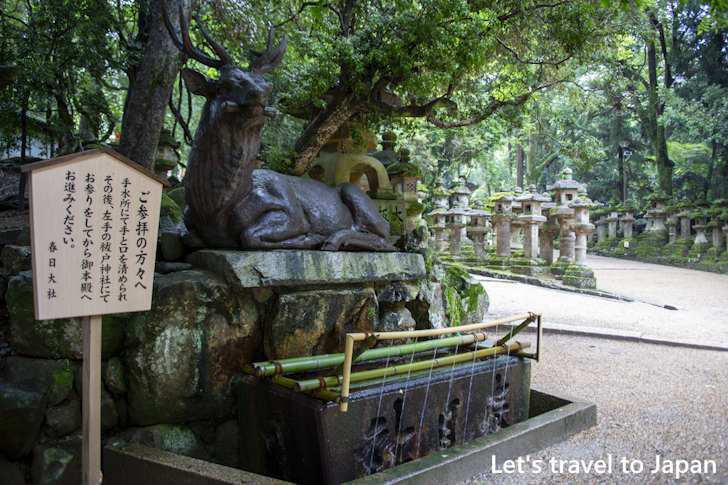
Nanmon(South Gate)
The Nanmon is situated directly in front of the Main Sanctuary and is the largest tower gate at Kasuga Taisha. Originally a torii gate, it was rebuilt as a tower gate in 1179. After being destroyed by fire, it was reconstructed between 1382 and 1385. It has been designated as an Important Cultural Property of Japan.
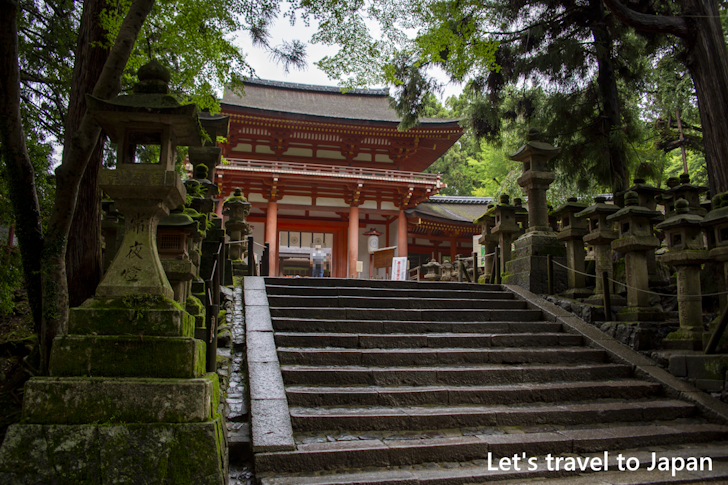
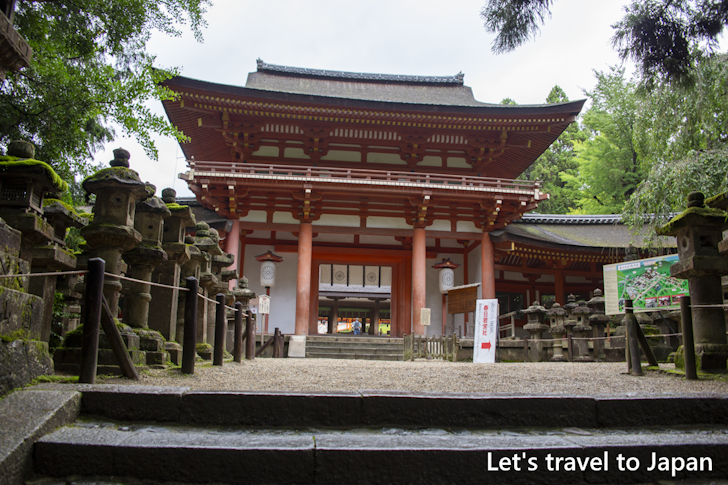
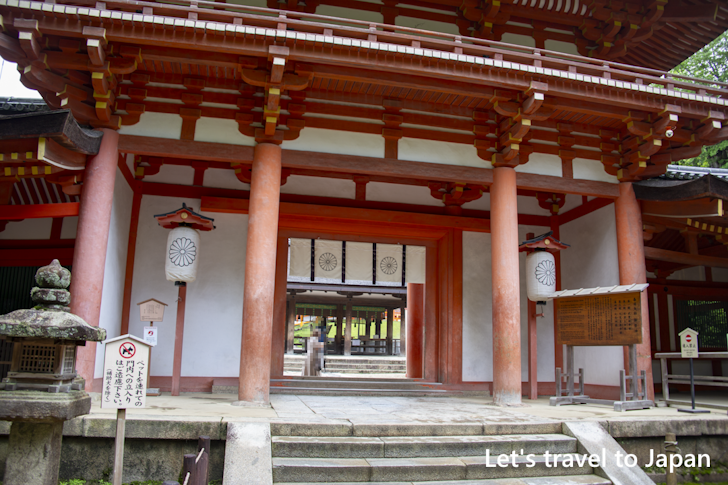
To the right of the Nanmon stands an ancient weeping cherry tree. During the cherry blossom season, the vibrant red of the South Gate juxtaposed with the cherry blossoms creates a stunningly beautiful sight.
Corridor and Hanging Lantern
The Main Sanctuary is surrounded by corridors on all four sides. Established in 1179, this historical structure features vibrant vermilion-painted corridors. It has been designated as an Important Cultural Property of Japan. Inside this corridor, as well as in the corridors extending to the left and right of the central gate, 1,000 hanging lanterns are suspended.
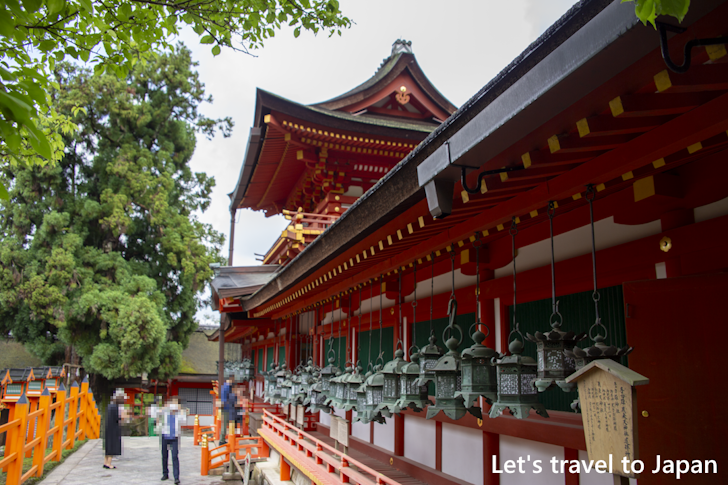
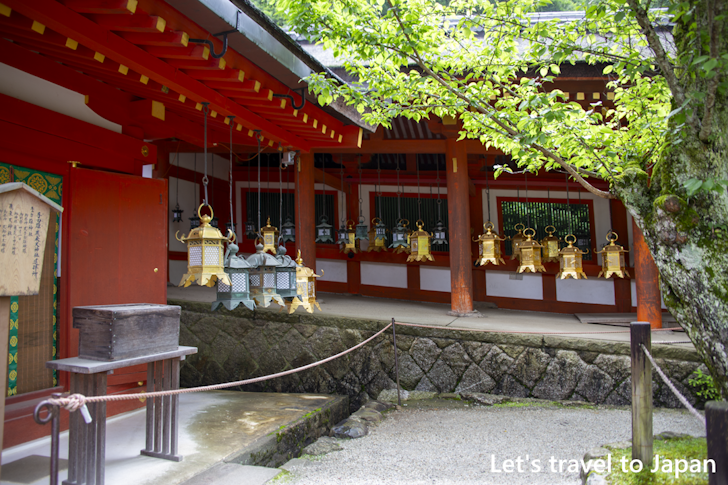
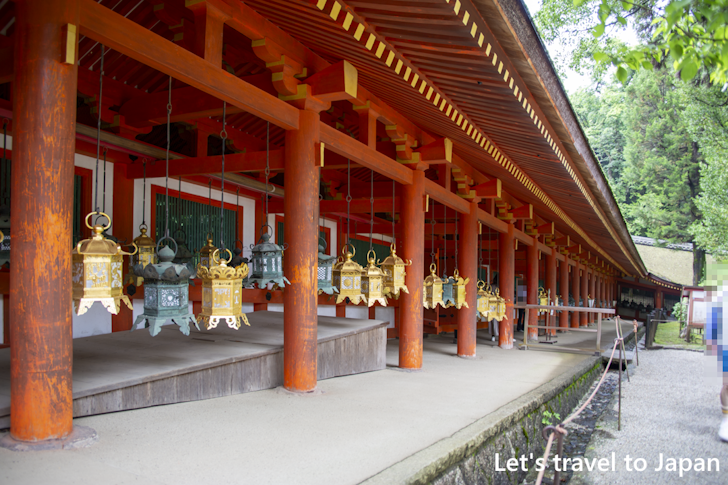
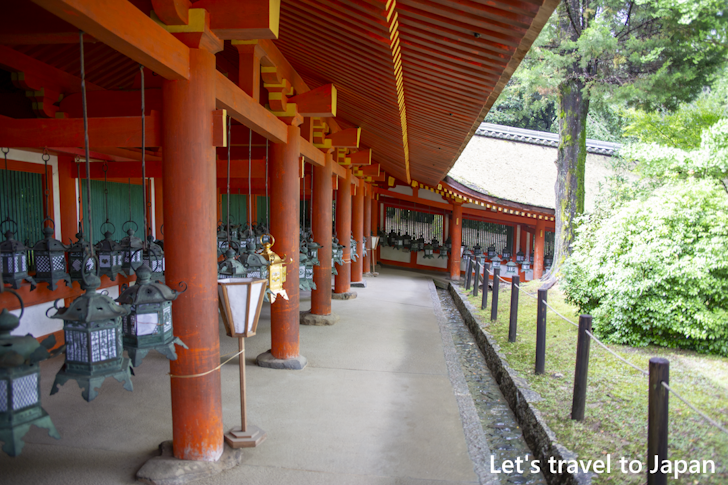
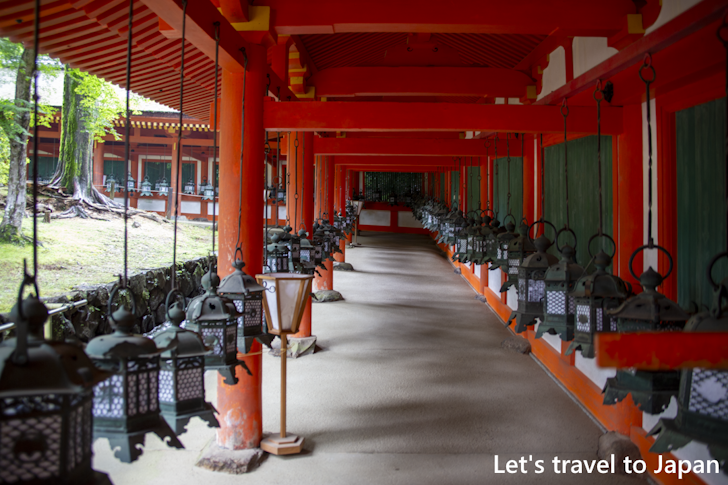
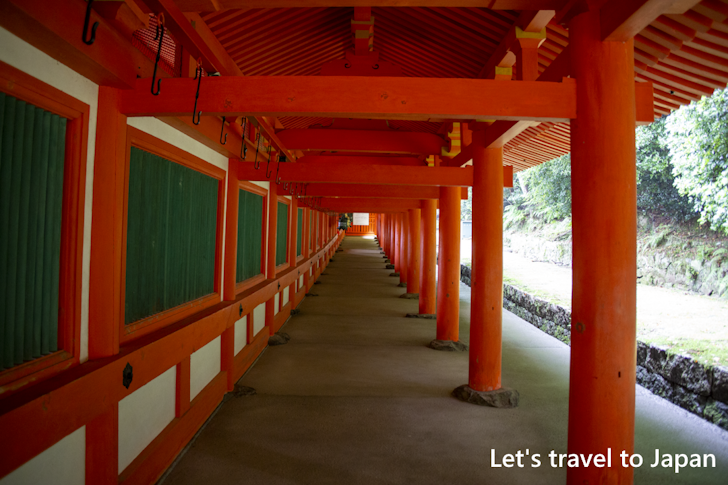
During Setsubun in February, as well as on the nights of August 14th and 15th, an event called "Mantoro" is held, where all the stone lanterns on the approach and the hanging lanterns in the corridor are lit.
Mikasayama-Ukigumonomine Yohaijo
During the Nara period, the deity of Kashima Jingu, Takemikazuchinomikoto, is said to have descended upon the peak of Ukigumonoe atop Mt. Mikasa. The Mikasayama-Ukigumonomine Yohaijo is a place to offer prayers to the "Honganji Shrine" located at the summit of Mt. Mikasa. It is set up on the outer side of the eastern corridor.
Mt. Mikasa is considered a sacred mountain and is off-limits, so the general public is not allowed to enter.
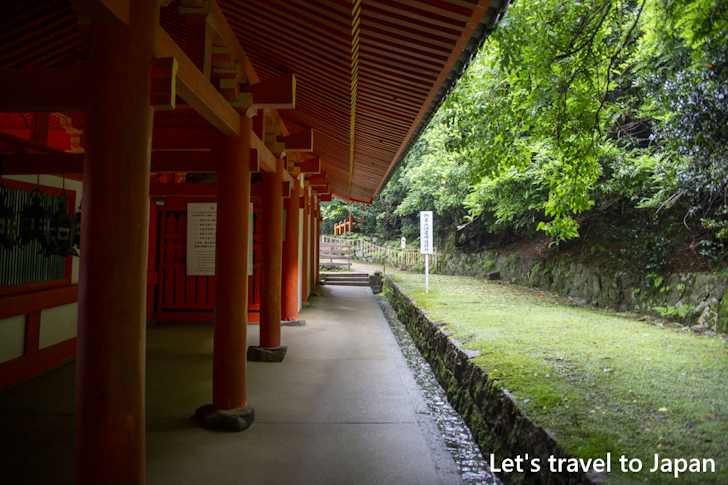
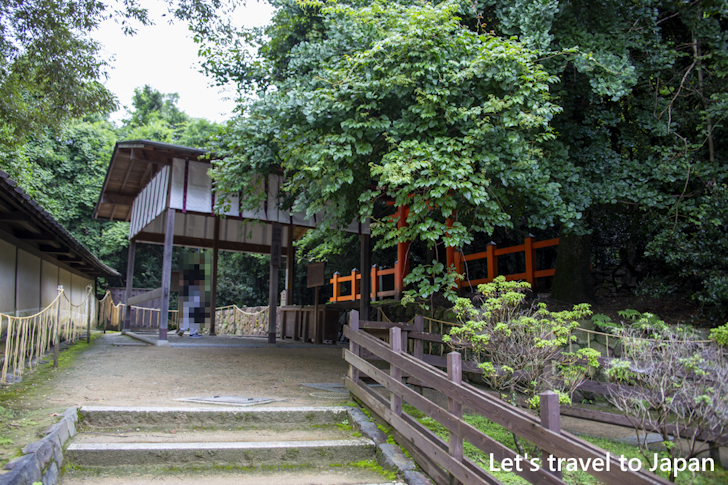
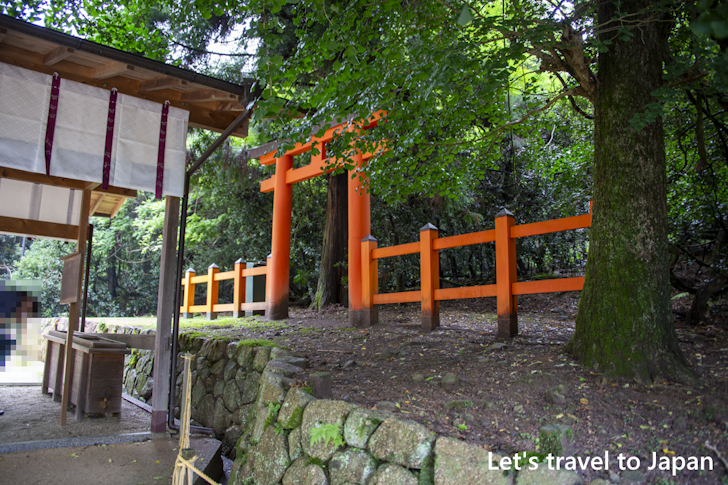
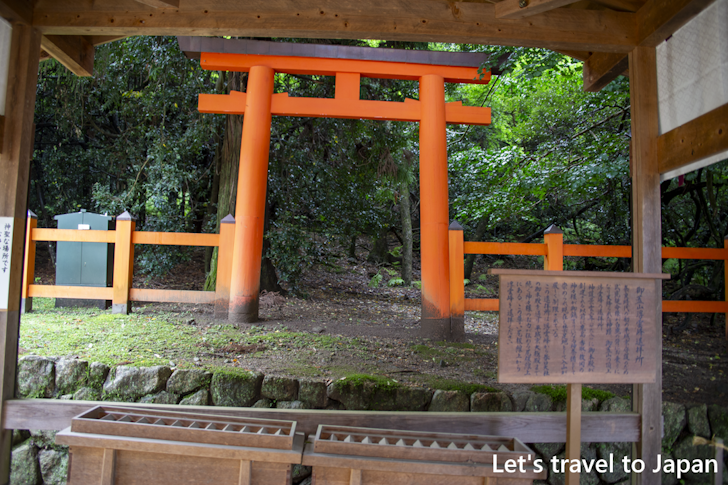
Chumon(Middle Gate)
The tower gate directly in front of the Main Sanctuary is called the Chumon. Behind the Chumon lies the Main Sanctuary (photography is prohibited inside the Main Sanctuary). On either side of the Chumon, corridors extend like outspread wings, and these too have hanging lanterns.
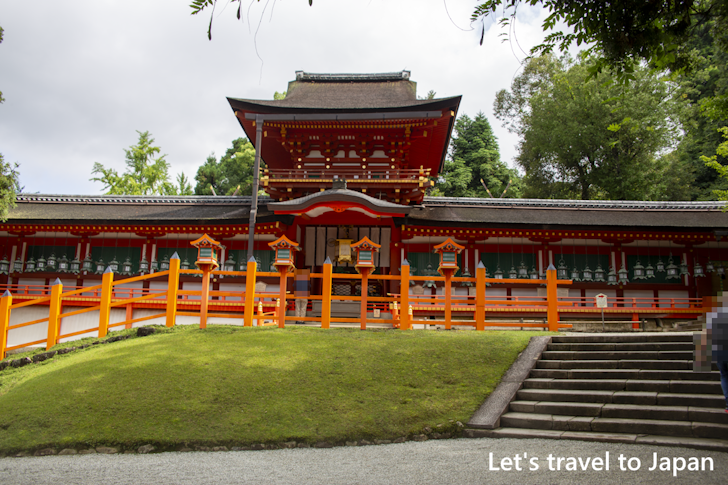
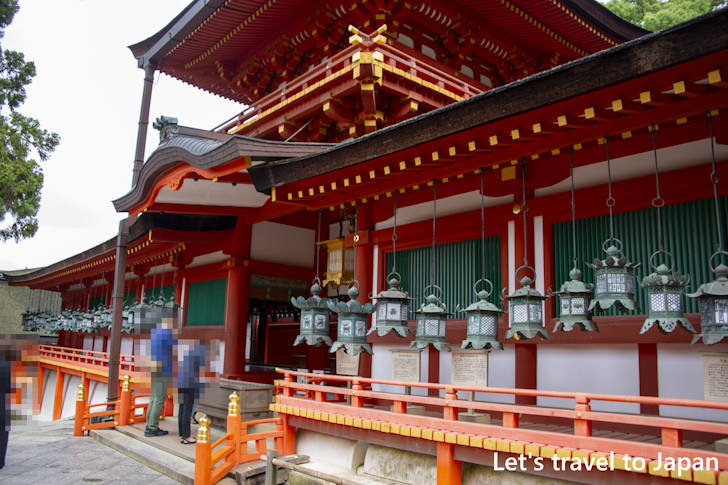
Fujinami-no-ya Hall
At Kasuga Taisha, the Mantoro event, during which every lantern is lit, takes place on the night of Setsubun in February and on the nights of August 14th and 15th. You can experience this Mantoro event at Fujinami-no-ya Hall. Inside a darkened room, numerous lanterns are hung, allowing visitors to experience the enchanting sight of the Mantoro.
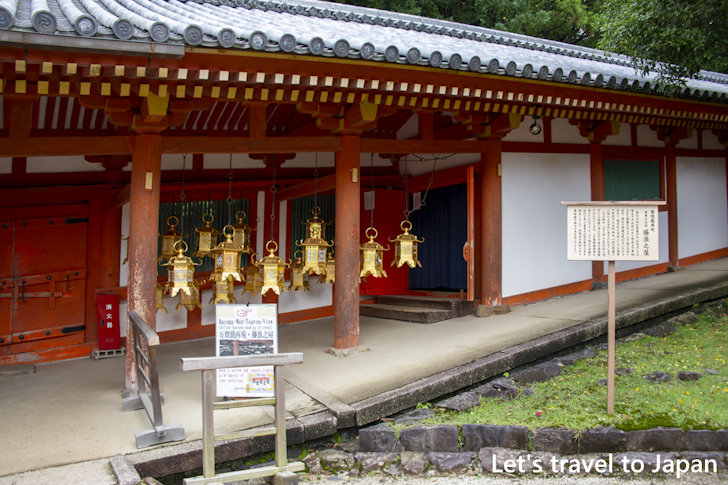
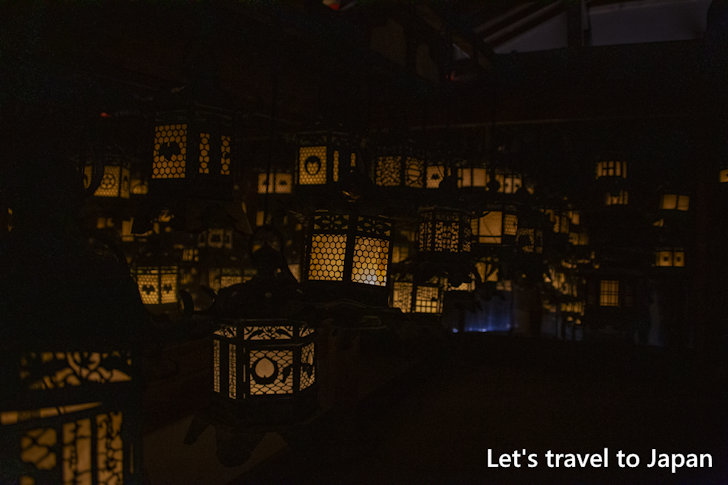
Shato-no-Ohsugi(Giant cedar tree)
The Shato-no-Ohsugi is a 25-meter-tall cedar located next to the Naoraiden Hall. It is said to be 800 years old. An emaki (illustrated handscroll) called "Kasuga Gongen Genki", dedicated to Kasuga Taisha in 1309 during the Kamakura period, depicts this cedar when it was a young sapling.
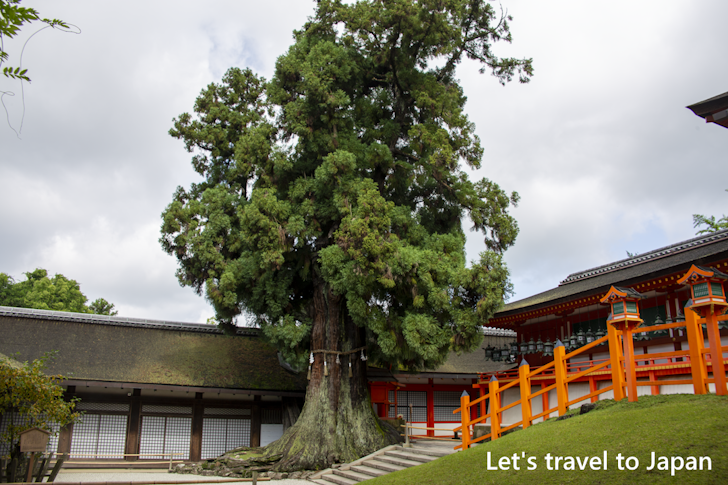
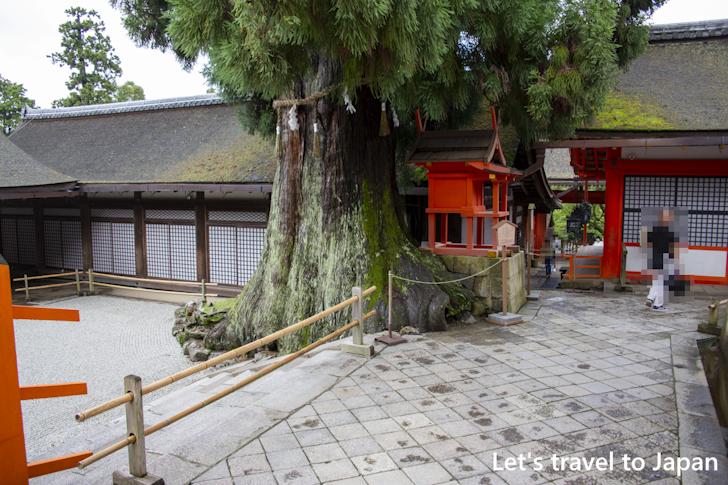
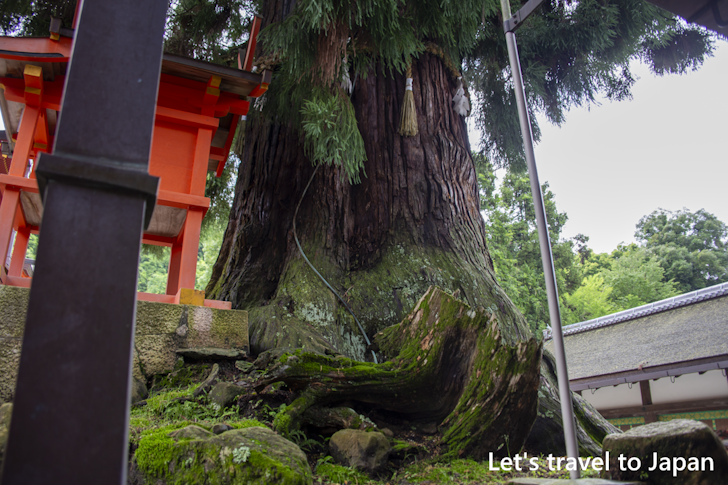
In the same location as the Giant cedar tree, there's a byakushin (Japanese false cypress) tree, which is believed to be 500 years old. The byakushin grows at an angle and penetrates through the roof from the side of the adjacent Important Cultural Property, the Naoraiden Hall. It is said that at Kasuga Taisha, trees are greatly valued; hence, the Naoraiden Hall was built to accommodate the byakushin tree, resulting in this unique construction.
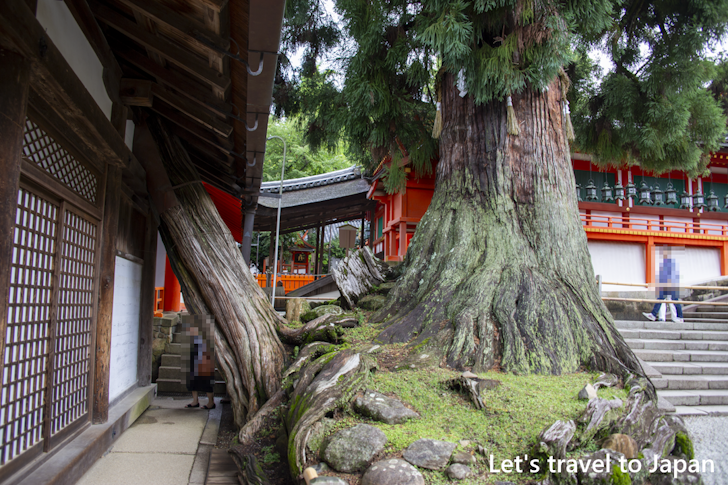
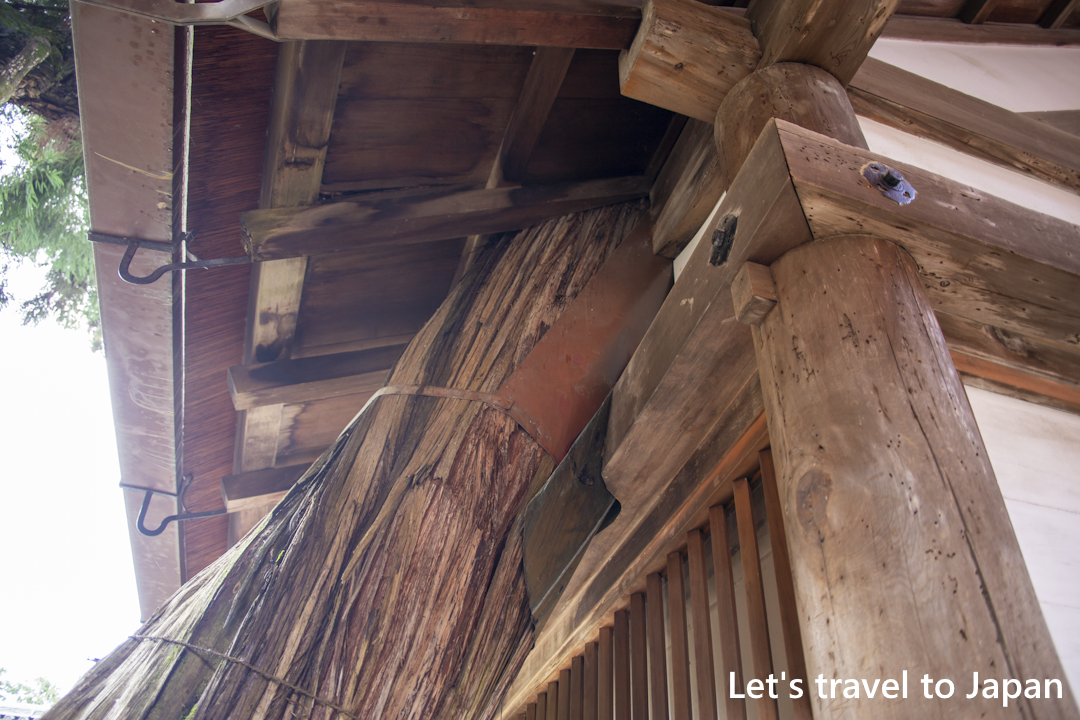
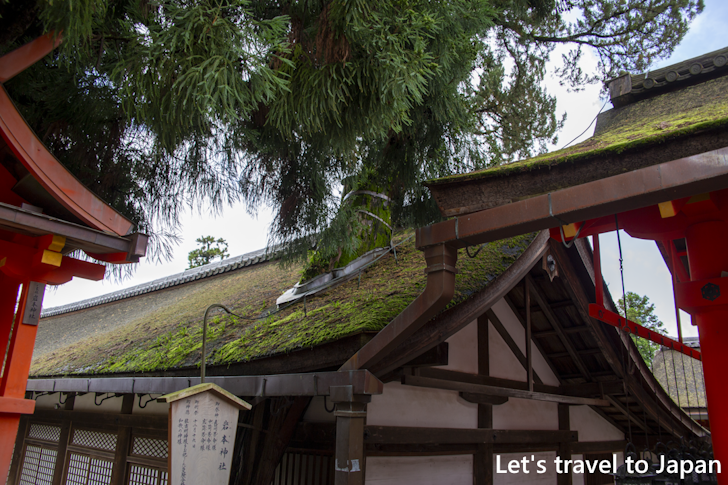
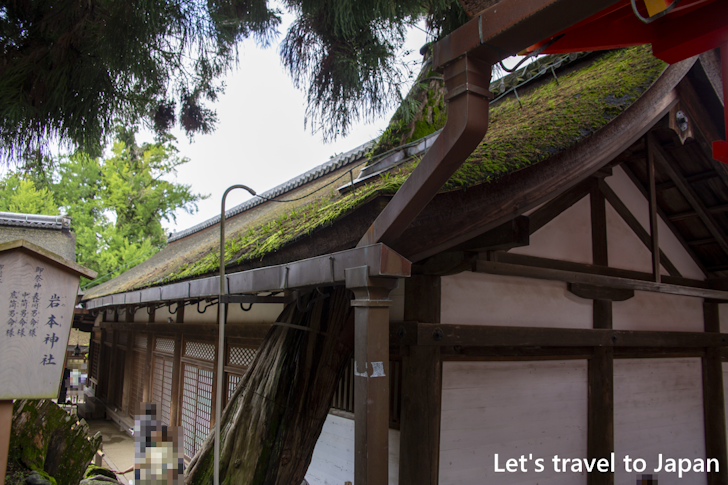
Sunazuri-no-Fuji(Drooping wisteria)
Immediately after passing through the Nanmon, on the left side in front of the Keigamon, stands the "Sunazuri-no-Fuji". It is believed to be over 700 years old, and it is named for its long vines that hang down, nearly brushing the ground. The wisteria blossoms are in full bloom and best viewed from mid to late April.
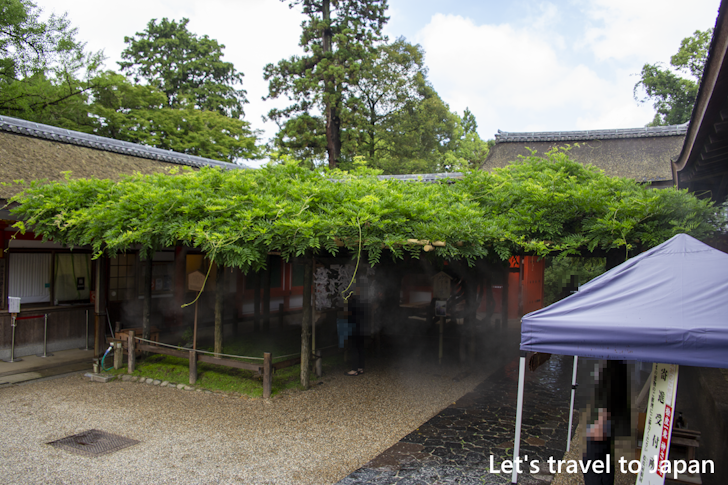
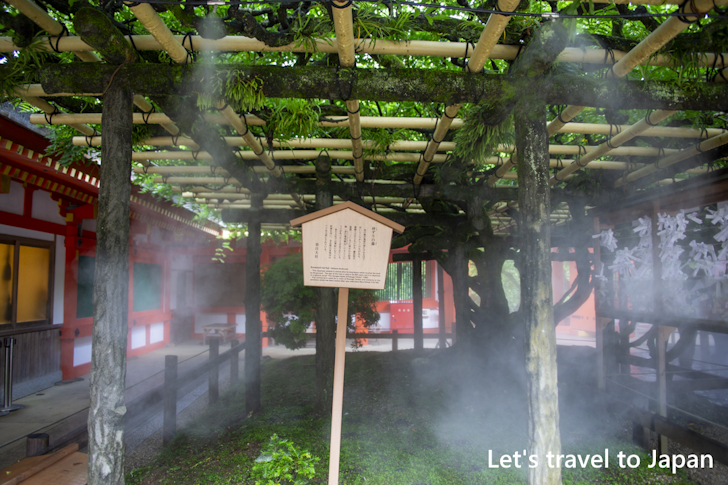
Meoto-Daikokusha Shrine
One of the associated and branch shrines of Kasuga Taisha, and part of the "Wakamiya 15 Shrine Pilgrimage", is the Meoto-Daikokusha Shrine. This shrine is unique in Japan for venerating the deity Meoto Daikoku, who is associated with marital harmony and matchmaking. It is located right next to the Wakamiya Shrine.
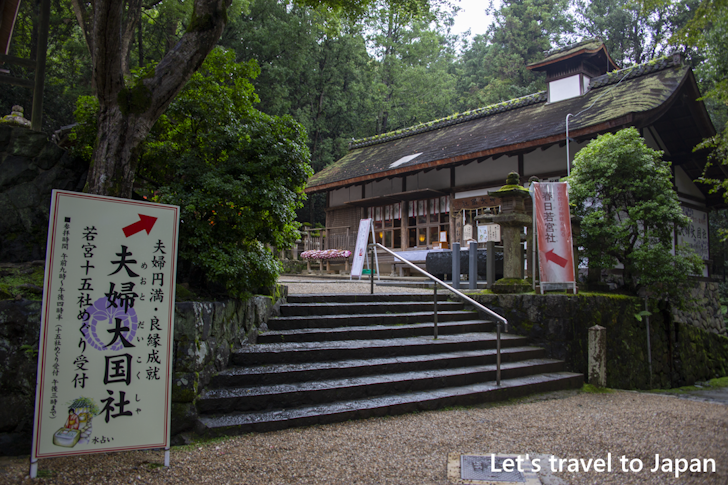
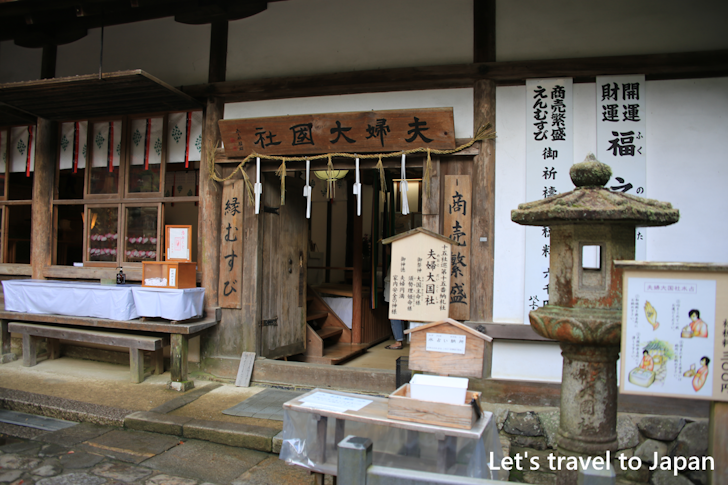
Water divination for love and academic pursuits, as well as dedicating heart-shaped ema (votive tablets) to pray for matchmaking, are popular activities here.
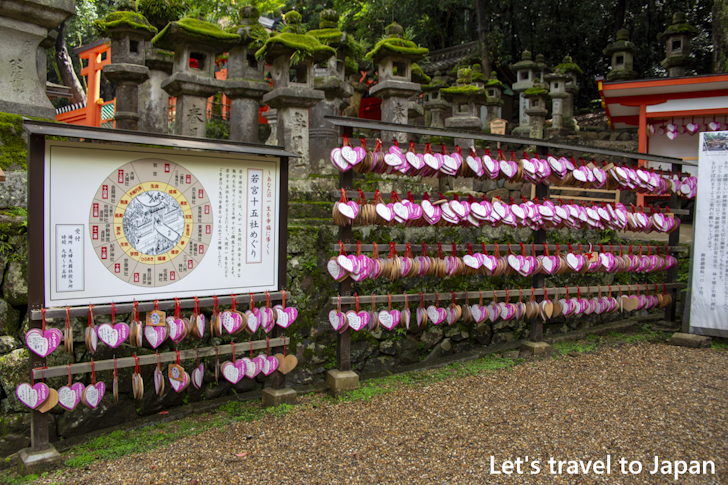
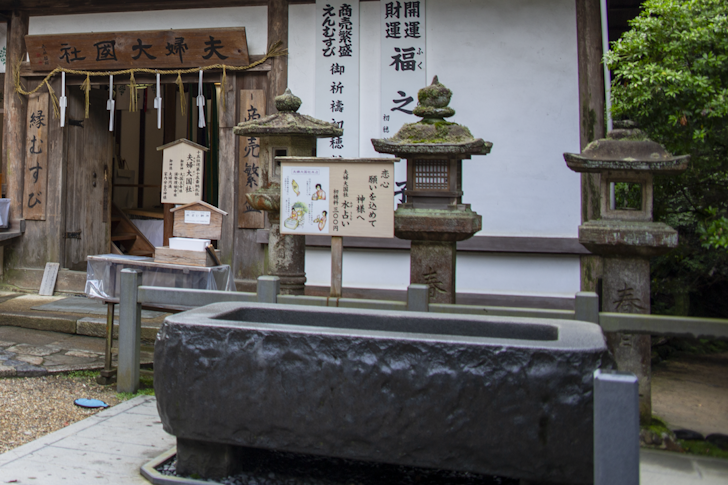
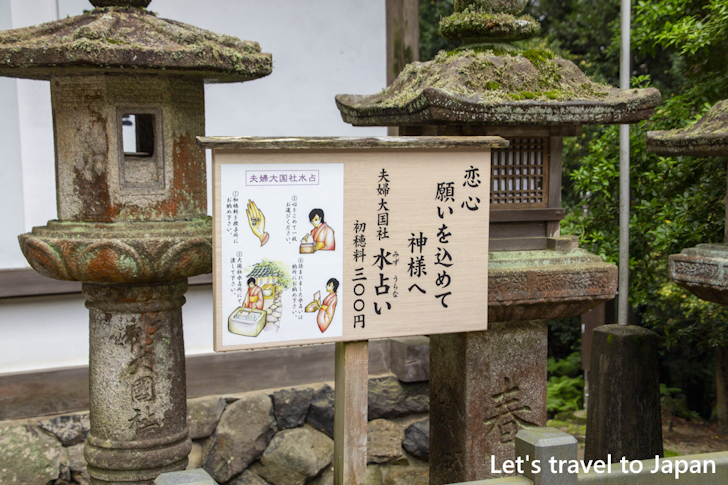
List of photos related to Kasuga Taisha Shrine
Please see below for a list of photos related to Kasuga Taisha Shrine.
Address and access method of Kasuga Taisha Shrine
Address of Kasuga Taisha Shrine
The address of Kasuga Taisha is "160 Kasuganocho, Nara City, Nara Prefecture".
Access method of Kasuga Taisha Shrine
I will explain how to access Kasuga Taisha Shrine from Kintetsu Nara Station or JR Nara Station.
Nara Kotsu City Loop Bus
4 minutes
Walking
10 minutes
Attractions near Kasuga Taisha Shrine
Several notable attractions are located near Kasuga Taisha Shrine:
Nara Park
A vast and picturesque green space, Nara Park is home to over 1,000 friendly deer that roam freely and interact with visitors. The park offers scenic walking paths, tranquil ponds, and vibrant gardens, making it a perfect destination for relaxation and exploration.
Todaiji Temple
A UNESCO World Heritage Site, Todai-ji is a historic Buddhist temple that houses the world's largest bronze statue of the Buddha Vairocana, known as Daibutsu. The temple complex features exquisite architecture and provides insight into Japan's rich cultural heritage.
Kofuku-ji
A historic Buddhist temple and UNESCO World Heritage Site, Kofuku-ji is known for its five-story pagoda, the second tallest in Japan. The temple complex includes a treasure hall displaying important Buddhist statues and artwork.
Naramachi
A preserved district in Nara with traditional wooden townhouses, narrow lanes, and small shops, Naramachi is perfect for experiencing the atmosphere of old Japan. It offers a variety of cafes, museums, and souvenir shops.
Isui-en Garden
A beautiful traditional Japanese garden close to Kasuga Taisha, Isui-en Garden features ponds, stone arrangements, and seasonal flowers, providing a tranquil and picturesque retreat.
Other information about Kasuga Taisha Shrine
Official site about Kasuga Taisha Shrine :
https://www.kasugataisha.or.jp/
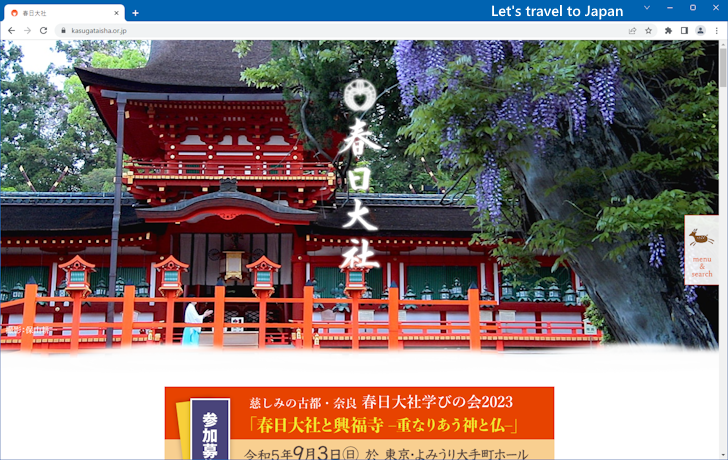
-- --
Thank you for reading to the end.
( Written by Tatsuo Ikura )